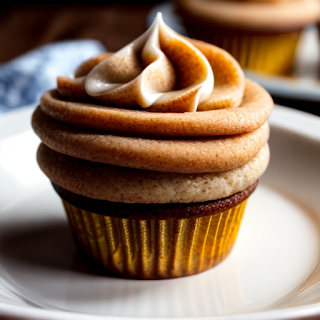The origins of the Snickerdoodle cookie trace back to German and Dutch immigrants in Pennsylvania during the 19th century. It is believed that the name "snickerdoodle" is derived from the German word "schneckennudel," which refers to a cinnamon-dusted sweet roll. Over time, this humble cookie gained popularity across the United States, becoming a beloved staple in many households.
The transition from cookie to cupcake occurred as bakers sought to innovate and elevate traditional recipes. By incorporating the signature flavors of the snickerdoodle into a cupcake format, a new sensation emerged—one that combines the buttery richness of cake with the irresistible allure of cinnamon sugar.
Ingredients
For the Cupcakes
- 1 1/2 cups all-purpose flour
- 1 1/2 teaspoons baking powder
- 1/2 teaspoon salt
- 1 teaspoon ground cinnamon
- 1/2 cup unsalted butter, softened
- 1 cup granulated sugar
- 2 large eggs
- 1 teaspoon vanilla extract
- 1/2 cup whole milk
For the Cinnamon Sugar Coating
- 1/4 cup granulated sugar
- 1 tablespoon ground cinnamon
- 1/4 cup unsalted butter, melted
Procedure
1. Preheat Oven: Preheat your oven to 350°F (175°C). Line a muffin tin with cupcake liners.
2. Mix Dry Ingredients: In a medium-sized bowl, whisk together the flour, baking powder, salt, and ground cinnamon. Set aside.
3. Cream Butter and Sugar: In a large mixing bowl, cream together the softened butter and granulated sugar until light and fluffy, using a hand mixer or stand mixer.
4. Incorporate Eggs and Vanilla: Add the eggs, one at a time, mixing well after each addition. Stir in the vanilla extract until well combined.
5. Combine Dry and Wet Ingredients: Gradually add the dry ingredients to the wet ingredients, alternating with the milk. Begin and end with the dry ingredients, mixing until just combined. Be careful not to overmix.
6. Fill Cupcake Liners: Divide the batter evenly among the prepared cupcake liners, filling each about two-thirds full.
7. Bake: Place the muffin tin in the preheated oven and bake for 18-20 minutes, or until a toothpick inserted into the center of a cupcake comes out clean.
8. Prepare Cinnamon Sugar Coating: In a small bowl, mix together the granulated sugar and ground cinnamon for the coating.
9. Coat Cupcakes: Once the cupcakes are baked and still warm, brush the tops with melted butter, then dip them into the cinnamon sugar mixture, ensuring an even coating.
10. Serve: Allow the cupcakes to cool completely on a wire rack before serving. Enjoy the irresistible flavors of Snickerdoodle Cupcakes with a glass of milk or your favorite hot beverage.
Preparation Time
- Preparation: 20 minutes
- Baking: 18-20 minutes
- Total: Approximately 40 minutes


Comments
Post a Comment
Thanks for your feedback